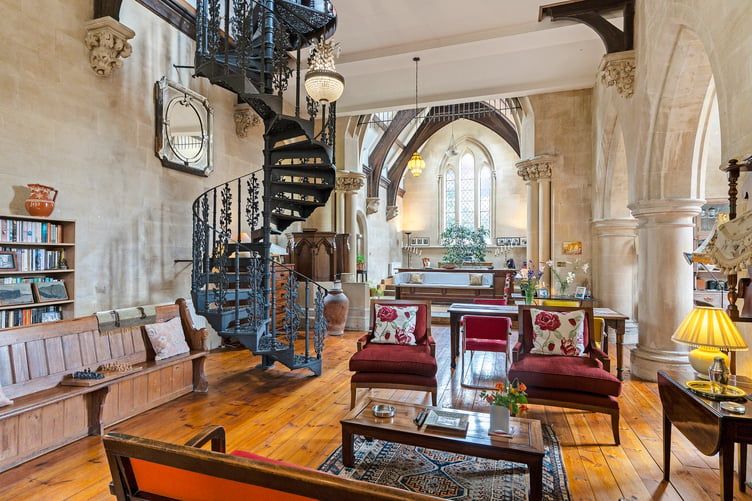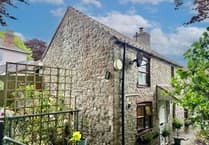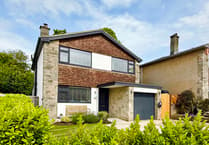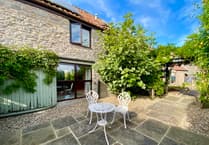This “unique” property for sale is a former church which sits in 20 acres of “idyllic” grounds and gardens.
St James’ Church, in East Cranmore, was built in 1846 for the Paget family on the site of a former Saxon church.
The church operated until the 1950s, and in 1985 was taken over by the current owners, who converted the property into a two storey home.
The church was built in Doulting freestone with a slate roof and spans nearly 3,000 square feet, sitting in grounds of 20 acres.

Inside, there is an open plan layout on the ground floor, with the former nave, chancel and vestry forming a living area with detailed masonry, ornate windows and flagstone floors.
Completing the ground floor, there is also a bespoke fitted kitchen, which connects to a utility room and a cloakroom.

An ornate cast iron spiral staircase leads up to the first floor, where a large open plan space links to the principal bedroom, which has an en-suite bathroom, plus a second bedroom and a shower room.
Further steps lead to another bedroom or study, and throughout the first floor are features such as exposed wooden ceiling trusses with decorative inlays and ornate moulded stone windows.

The grounds include lawned gardens with specimen trees and paved seating areas, while the rest of the land is a 19 acre field which could be used for keeping livestock.
The property is for sale with Savills for a guide price of £1,750,000.
Matthew Pegler from Savills Bath is marketing the property and commented: “Situated within a particularly beautiful and much sought-after corner of Somerset, close to Frome and Bruton, St. James is a wonderfully unique home.
“Boasting 20 acres of idyllic gardens and grounds, the former church has been sympathetically converted with considerable flair, making for an incredibly striking property that makes the most of its ecclesiastical charm.”





Comments
This article has no comments yet. Be the first to leave a comment.